The UK’s E-7 Wedgetail programme is progressing steadily, with key milestones achieved and infrastructure improvements on schedule.
In response to Johanna Baxter (Labour), Maria Eagle, Minister of State for Defence, provided an update highlighting the progress of the highly anticipated Airborne Early Warning and Control system.
“The Wedgetail programme has seen the first aircraft complete three test flights, be painted in the markings of 8 Squadron, and continues with the installation of mission equipment at STS Aviation at Birmingham Airport,” Eagle confirmed. Following these upgrades, the aircraft will enter its test and evaluation phase later in 2025.
Aircraft two and three are also advancing as planned, with their modification and integration processes underway. These developments are critical to ensuring the fleet’s operational readiness and ability to meet the UK’s defence needs.
Supporting this operational capability is the ongoing infrastructure development at RAF Lossiemouth, which Eagle described as making “significant progress.” She noted that the combined Poseidon and Wedgetail engineering line facility and 8 Squadron’s headquarters office accommodation have been completed.
The final elements of the technical facility are expected to be handed over by March 2025, further enhancing the base’s ability to support both aircraft platforms effectively.



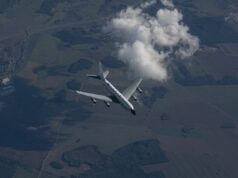
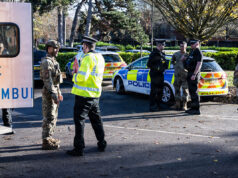

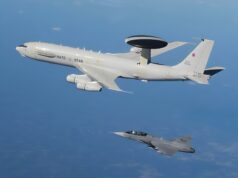
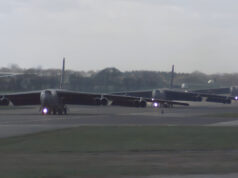
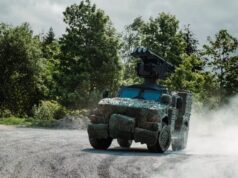
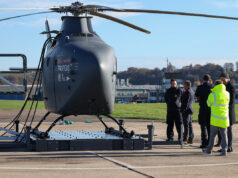
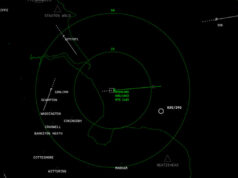
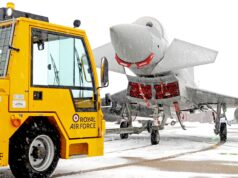
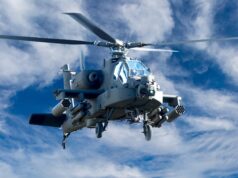

More of these would be nice.
I am not so sure. Awcs world nicely in Ukraine, only because they are not engaged. Th R37 and new chinese weapons makes Awacs an unsafe plateforme. Airborn laser intended to protection Awacs are not working. So these planes will be usefull to protect back lines, but may no longer be suited for frontline opérations. The same applies to tankers. So this capabilities will have to be transfered to frontline assets like drone or fighter, and a comon picture of all gathered Intel will have to be reconstructed for all available planes. Like what is intended for F35 TR4 or Rafale F5.
Take your point certainly these sort of assets are going to increasingly be the prime targets esp for the Chinese in the Pacific where the US is so weak in that regard presently, after all the clean range of an F-22 is about 40% more than a mid war Spitfire and it’s a weak point for the F-35. I will be interested in the stats for the new Navy 6th Gen fighter to see how it deals with this, though at least stealth drone tankers will help somewhat.
Just to add Ukraine has arguably taken down at least one Russian AWACS in the air over the Sea of Azov though I think the Russians may have taken one down too, all becomes a little hazy in my memory as to final conclusions but certainly the Russians are reluctant to fly the few they have left anywhere near the front line. Certainly one way or another half their small fleet has been eliminated.
The issue of using drones or smaller aircraft as an alternative AWACS platform, is energy generation for radar and avionics for full 360° coverage of airspace.
Just need 2 more then that would be a reasonable number at minimum cost!
The 2021 cancellation of two E-7 aircraft was theoretically going to “save” £265 million from the projects estimated £2,215 cost – the problem being that that this had grown from the £2 bn approved in 2019, but the MOD didn’t have the extra money. However after announcing the cancellation the likely savings quickly became – zero, zilch. The MOD was still obliged to take delivery of all five MESA radar and mission systems as these were already being manufactured; it had to compensate Boeing, STS Aviation and other major supplies for breaking agreed contracts; and most facility costs were fixed regardless of whether the RAF got 1 or 10 aircraft. Any supposed savings then became based on reduced operating costs – the assumption being made that 3 compared to 5 a/c would need fewer personnel, less maintenance and spares, etc. But there is a strong suspicion that cancelling two aircraft actually increased even these recurrent costs as economies of scale were lost and high inflation led to suppliers significantly hiking their prices in the renegotiated contracts. Embarrassing projects such as this are undoubtedly a major reason why the MOD has stopped publishing the annual Equipment Plan, and is even refusing to provide relevant information to the NAO.
Parliament should pass a law requiring MoD to list all projects progress and costs against planned timescales and spend profiles with justifications or explanations for deviations. There could be two lists, one for projects in the public domain and a second for black projects. The second list should list be made available for scrutiny in closed sessions by suitably security cleared NAO staff. Public reports could simply refer Black project spending without giving any project details, not sure how many black projects the UK has?
There is no excuse for the MoD to hide this data as it was available in the past. They are covering up their failures. Plus such secrecy can enable corruption by preventing public and parliamentary scrutiny. This trend is very irritating frankly.
Cheers CR
It’s not the first time the MOD have done this. 20 years ago I was employed as a contractor by the NAO to audit several MOD projects as I had the required mix of skills, experience and clearances. But the MOD refused to cooperate and my working week basically consisted of idly sitting at a desk in Luton or central London. Eventually the NAO gave up and my contract was terminated.
Radars are sat there and could be sold to another nation who want them…. @ the Time the 737 E7 is built on the 737 NG platform and with the Max range falling from the sky at alarming rates, Airlines who were switching airframes stopped and the NG became a high cost option.
White paper report at the time was questioning the entire Awacs platform with the Radar on a F35 more powerful than the E-3s and the survivability of a large framed airframe in a war based airspace.
Boeing couldn’t then supply the 5 airframes at the original fixed cost and wouldn’t.
With the USAF Now developing the E7+ And investing in a upgrade and improvement tranche, RAF were offered the chance secure the 3 airframes that will support RAF for the next 5 years on a 1 + 1 + 1 nature. RAF land based Radars means we can already cover what the E-3s were doing and Nato could pick up the slack with its fleet.
Maybe just Maybe the Procurement process has worked rather than have 5 Airframes at a fixed spec that could need a expensive upgrade to be able to communicate with our USAF & Nato future fleets.
But you have to question is a AWACS airframe the real answer in a European battlefield.
So we have a hangar, offices, desks and sofas but no actual active AEW planes….you couldn’t make it up…..
It looks like they are sharing the engineering/hangar facilities with Poseidon aircraft. It would make sense if they are operating from the same office, considering E-7 and Poseidon aircraft will operate from the same Apron from the look from press releases.
More would be nice
The procurement of three aircraft will result in only one available (day to day) for Ops, Trg and Trials.
Hence why we bought 7 E-3Ds.
Five aircraft are bearably sustainable, and like the E-3D and Sentinel, we are unlikely to properly support them and they will not last more than 20 years.
We should have bought them in conjunction with the US and NATO and utilised common crew training, support and logistics.
As ever, we have to do the bespoke thing and screw it up.
Even better, just get Australia to build them, to their spec and upgrade them in lock step with the Australians.
But no, we had to take a known platform and ‘tweak’ it. We now have three bespoke airframes, different from the rest of the E7 fleets….
I agree, no upgrading and withdrawn and gone within 20 years
I suspect the only way we’ll ever get an increase in Early Warning system numbers is using a UAV system developed for the role but that sounds like a huge technological challenge. Maybe a derivative of the system the RN may ‘eventually’ get …. if they’re lucky!
Australia Builds are some 10 years old, Airframe is a E7 not bespoke made to Boeing specifications, so clearly you lack clear information. 3 current Airframes are to a Standard with modern systems. so they are superior to the Australian systems, USAF is currently supporting a major upgrade to the E7 system fleet to replace the current version. UK could have 5 Airframes into service of a lower Tranche and possibly needing a Upgrade When the USAF + Came onto the market.
For once the RAF & the procurement team got there plan right. 3 Airframes gives a 1 on 1 in reserve & 1 in maintenance for 5 years. E7 is 50% more capable than E-3 USAF ordering at a 1 to 3 ratio on its E-3s
Bashing the UK process just because, we are no longer a Empire, Aircrew for this type sitting around waiting no going to happen
Australia Builds are some 10 years old, Airframe is a E7 not bespoke made to Boeing specifications, so clearly you lack clear information. 3 current Airframes are to a Standard with modern systems. so they are superior to the Australian systems, USAF is currently supporting a major upgrade to the E7 system fleet to replace the current version. UK could have 5 Airframes into service of a lower Tranche and possibly needing a Upgrade When the USAF + Came onto the market.
For once the RAF & the procurement team got there plan right. 3 Airframes gives a 1 on 1 in reserve & 1 in maintenance for 5 years. E7 is 50% more capable than E-3 USAF ordering at a 1 to 3 ratio on its E-3s
Bashing the UK process just because, we are no longer a Empire, Aircrew for this type sitting around waiting no going to happen
We bought 7 E3s to meet the station keeping reuiremnet in times of tension in the Air Staff Requirement – we seem to have given up on real operational requirements which take in the forces necessary to fight a war and just buy a random number which will deliver very restricted operations in time of real tension when 24 hr station keeping will be required over several weeks.
Progressinhg…with a smaller number of airframes; over budget and slow, slow slow…
Simple message to HMG. Put the order back upto 5 and then next step upto 7. 7+ airframes are required for a worthwhile resilient force level.
Fingers crossed SDSR will put the UK back on track
SDR is looking for savings and ruling out 3%
We’ll be lucky to get 2.5…
SDR expects 2.75% GDP by 2030 according to Lord Robertson at the Defence Select Committee. That seems an HM Treasury idea of “as the economic situation allows”, and is not based on the demand of threats.
However it’s obvious that 25 years neglect due to the Peace Dividend delusion will not be fixed by such a small increase over the current 2.3% GDP.
Sovereign capabilities require Industrial Strategy and consistent demand so that suppliers can invest with confidence and so deliver efficient supply.
Will the government ‘For Growth’ fulfill the first responsibility of the nation state: Defence…
👍Exactly!
Could they get the airframes? That was part of the problem in the first place, before we would be competing against US efforts.
And don’t forget our old E3Ds were sold off years ago and are being operated successfully in South America I believe. Surely we could have kept this key capability until Wedgetails operational.
As others have said 3 ac is wholly inadequate. We had 7 E3Ds…..
This country is almost defenceless yet nobody seems to care.
When the Russians hit us perhaps people will want up and smell the coffee…
“Eaglespeke”. Usual politicians word salad for not a lot happening.
The UK owns the ship sets and radars for another 2 E-7’s. Just buy some used 737’s and get on with it.
The 737s for this design are hard to get they’ve been out of production for a while
Second hand supply for commercial aircraft is not only limited by airframe flight hours but the ruthless pursuit of lower passenger flight km cost.
As soon as a better deal is available the Airline will dump the old for the new.
If only 737 Max was safe and successful the older 737 800 required for E7 Wedgetail would be available. Sadly Boeing has cooked it up for a long time. So all the advantages of a proven COTS platform have been hard to achieve.
There is a lot more equipment which make up an E7 as well as the Radar including communications equipment and radios and data links, mission system software and hardware, self protection systems, air to air refuelling receptical, internal comms and military cockpi, additional generators on the engines with revised engine pods. Additionally, the state of the airframe is crucial and with second hand aircraft you don’t know what you have and what changes are necessary untill you open up the fuselarge and wings. Its ashame the USAF E7 programme is still several years from the production go ahead as that would be a far better solution in the long run. The big question is how long can the UK afford to wait for the US production line to oen up.
Given the range of air to air or ground to air missile, existing or to be fielded soin; given the range of sensor; given the costs… I wonder.
10 km flight height gives 350km range.
20 km flight height gives 700km range.
So… 30 km flight height is the new meta altitude to fly safely an early warning plane. What is the minimum speed for a plane flying at 30 km, with a large radar and an energy comsumption very high… could be interesting to think about it. Same thing could be thought about multiple CCeaptor or RBE2 radar on a variety of drones… trying to make them (drone plus radar) as cheap as possible, with respectible évasion capabilities… What could be the cheapest for a given sq km covered per hour… Don’t know about it…
What a mess. 3 x air frames really! The Royal Navy plan to remove ASAC Merlin in 2029. So we will have 2 x great big aircraft carriers with no EW systems on them and no, or very sporadic AEW support from E7!!. Great joined up thinking from MoD and senior starred ranks…. NOT. From Mr Angry a HMS Sheffield survivor!
Airframes 4 and 5 ordered yet ?
Na, thought not…